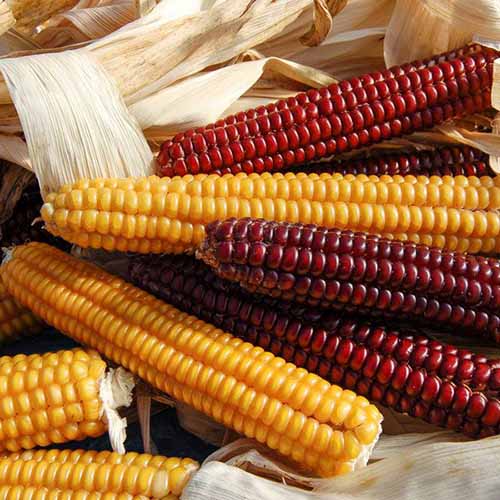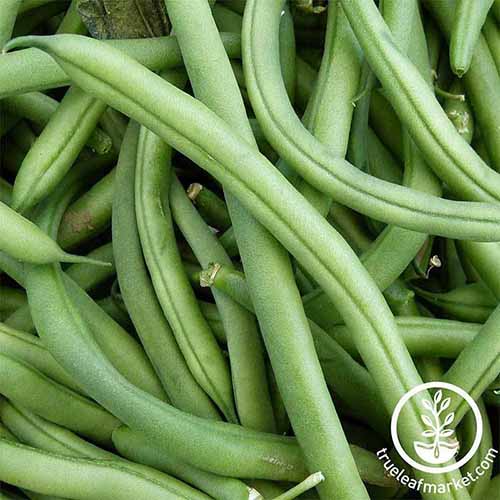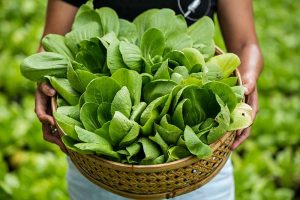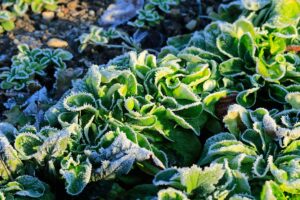One of my most gratifying experiences as a gardener has been cultivating a three sisters garden.
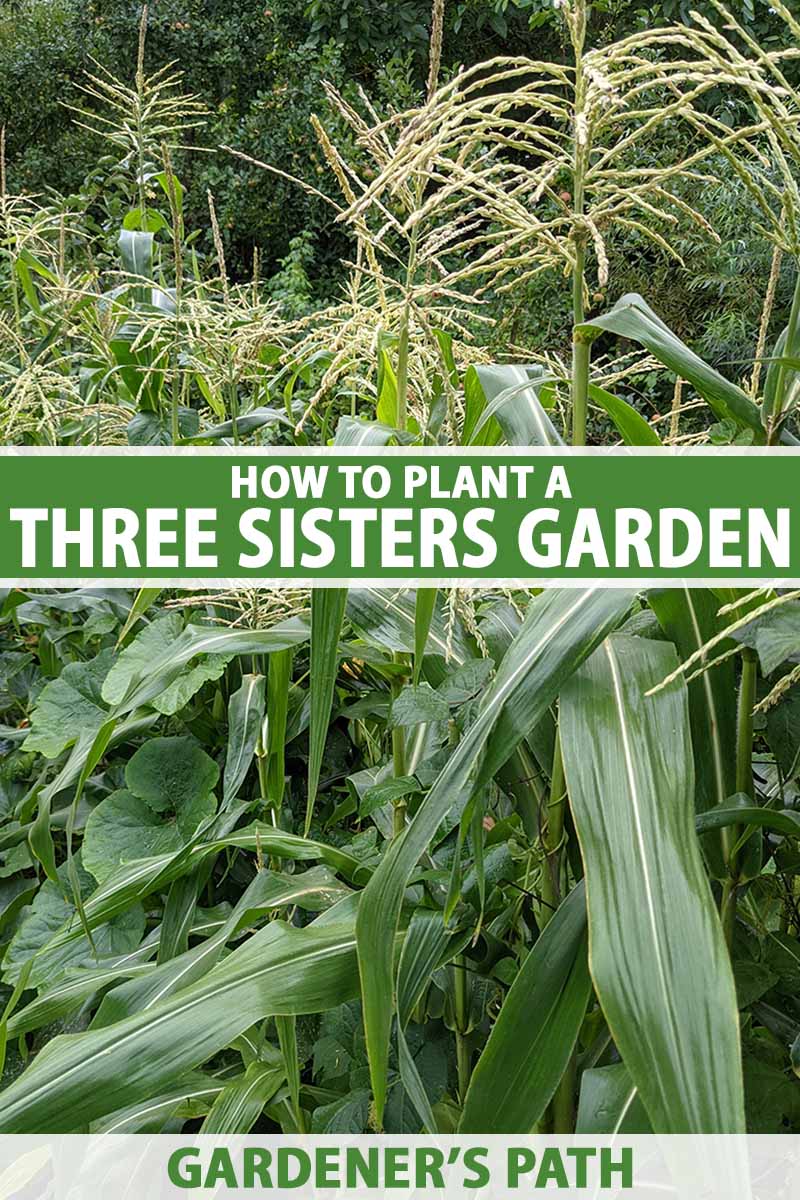
We link to vendors to help you find relevant products. If you buy from one of our links, we may earn a commission.
The satisfaction is derived not from growing these individual crops alone, but from mastering the well-known technique that allows corn, beans, and squash to thrive together in such a harmonious and complementary way.
Today, we will discuss how growing these crops together can be beneficial. Take a look below at the topics we will be going over:
What You’ll Learn
What Is a Three Sisters Garden?
Regardless of how it may sound, the term “three sisters” does not refer to a group of sisters cultivating the land together.
The three sisters is an intercropping practice that involves planting corn, beans, and squash at the same time in the same growing area.
It symbolizes a harmonious partnership among these three crops.
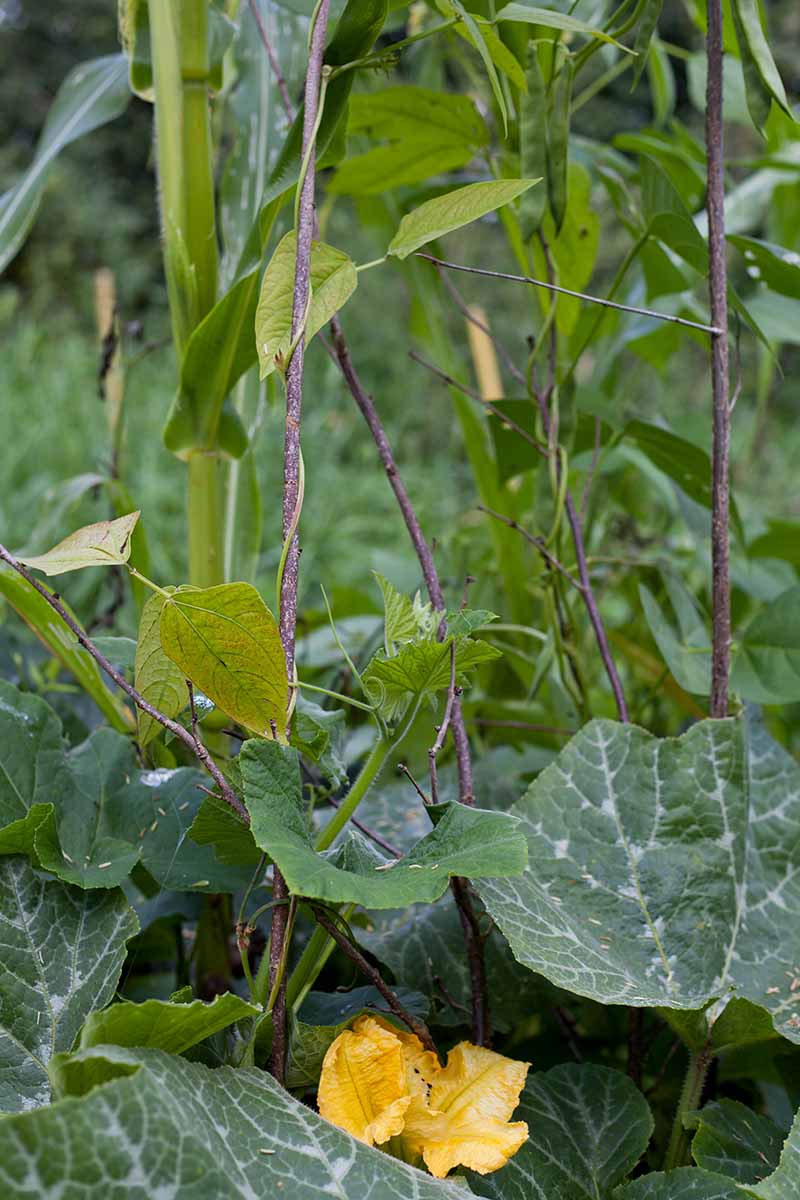
In the time-honored tradition of three sisters gardening, each mutually compatible crop plays a vital role within the thriving harmony of the garden.
The corn provides a sturdy pole (stalk) for the beans to climb, creating a natural trellis. In return, the pole beans contribute nitrogen to the soil, acting as a natural fertilizer, while also utilizing the corn stalks for support.
Meanwhile, the sprawling squash plants serve as a protective ground cover, effectively conserving soil moisture, reducing evaporation, and suppressing weeds.
Additionally, the broad squash leaves provide essential shading for the soil, helping to maintain a stable and favorable microclimate for all three crops.
You can read all about the scientifically-backed benefits of companion planting in our guide.
Cultivation and History
The three sisters agricultural technique is believed to have spread from Mesoamerica to North America, becoming a widespread practice among indigenous Native American tribes.
However, there is no specific known date for its adoption by these tribes.

This sustainable farming method was prevalent among various Indigenous communities, including the Mandan, Pueblo, Haudenosaunee (Iroquois), Cherokee, and tribes in the Northeast, Southeast, and Midwest regions.
It is often associated with the Northeastern Woodland tribes, particularly the Iroquois Confederacy. The name “The Three Sisters” originates from an Iroquois legend.
Alternative versions exist, but according to one such legend, Mother Earth passed away while giving birth to twin boys. Sky Woman buried her daughter in the “new earth.”
From her grave emerged three sacred plants: corn, beans, and squash. These not only symbolized life and sustenance but also served as vital sources of nourishment for generations to come.
These three sister spirits were known as “Diohe’ko,” meaning “our sustainers,” and “Kionhekwa,” meaning “life-givers.” According to legend, the “Great Spirit” gifted these sisters to the people, leading to the term “three sisters plot.”
The Iroquois had been cultivating the “three sisters” for over three centuries by the time European settlers arrived in America in the early 1600s.
Preparing the Planting Area
Ready to start your own three sisters garden?
Before planting, it’s important to begin with thoughtful planning and soil preparation.
Start by conducting a soil test and prepare your garden site, whether that’s by adding compost, well-rotted manure, or peat moss to improve the soil structure and add nutrients.
Clearing the area of grass, weeds, and stones is also recommended.
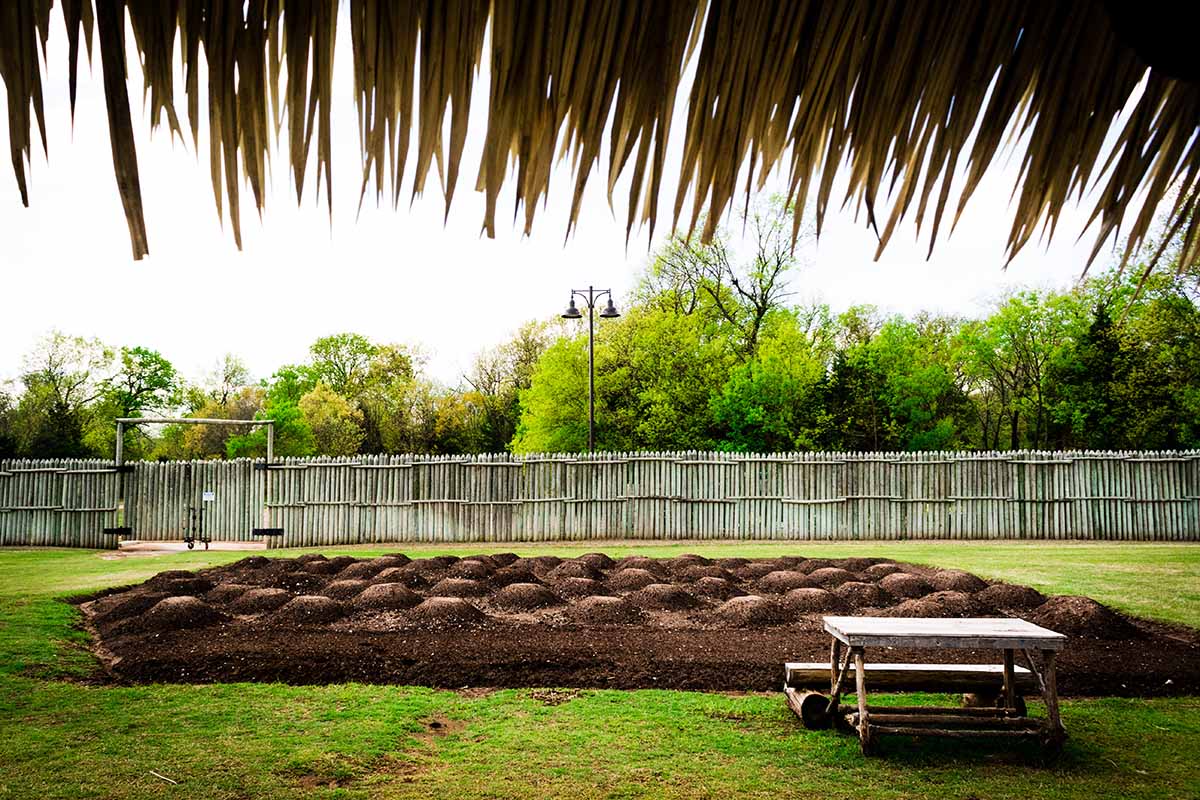
The ideal soil characteristics for this garden include good drainage, and a loamy texture that combines sand, silt, and clay. This combination supports both moisture retention and nutrient availability.
Aim for a slightly acidic to neutral pH range, around 6.0 to 7.0, to accommodate the preferences of corn, beans, and squash.
Now, let’s talk about water. Ensuring consistent moisture is vital for your three sisters garden’s success.
Throughout the entire growing season, it’s essential to maintain a steady water supply of at least one inch per week.
This consistent watering regimen, whether from rainfall, automatic irrigation, or manual watering, will help your garden thrive throughout the entire growing season.
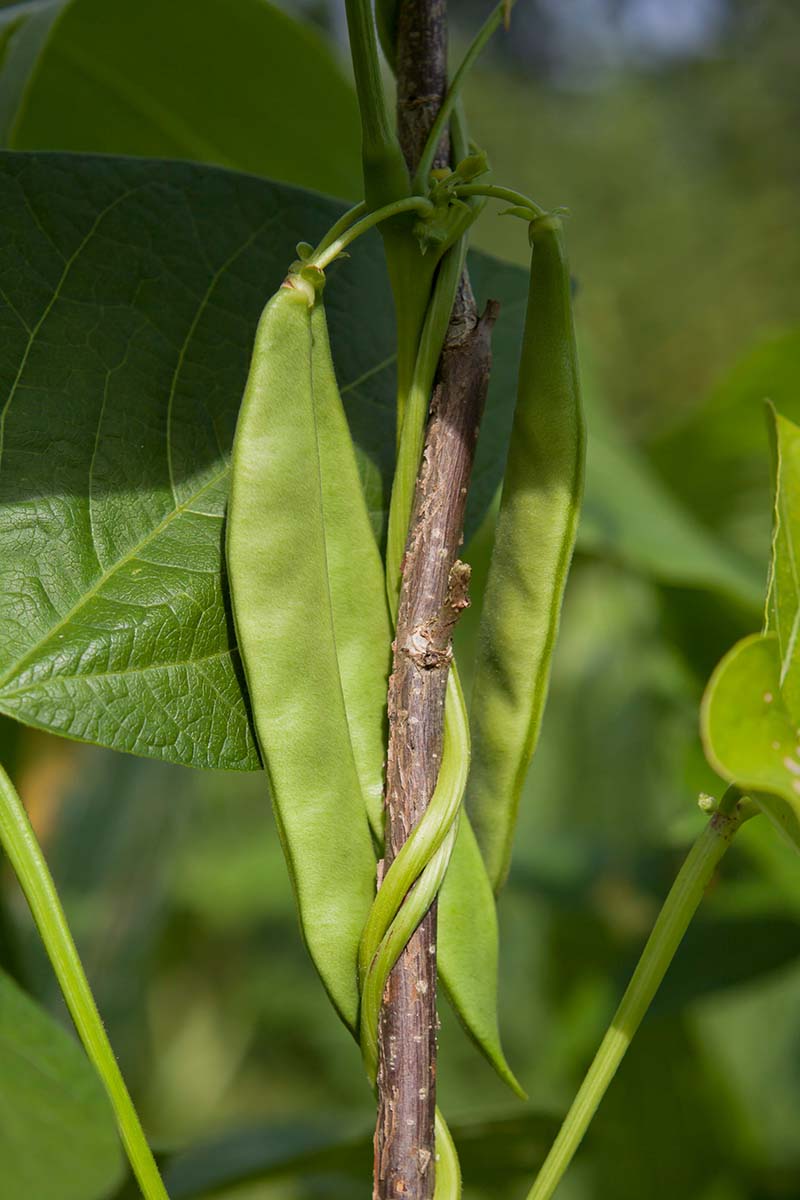
Before we dive into the details of growing your crops, it’s worth mentioning that there are alternative approaches to cultivating a three sisters garden.
However, I’d like to share the method I have used, which resulted in a beautiful and thriving garden.
I’ll admit, I’m a bit of a lazy gardener. In early spring, rather than laboriously turning over the soil and weeding in the area, I opted for a more lazy but not less efficient approach.
I strategically laid down cardboard across the surface, and to my delight, this method seamlessly accomplished the task of clearing the unwanted vegetation.
Along with this clearing method I prepared a mound (we’ll talk about how to do this shortly), and waited to start growing in late April.
Speaking of timing, it’s recommended to start planting in late spring to early summer, after the last frost date in your area. Select a sunny site that will receive six to eight hours of direct sunlight.
The three sisters garden should be started when nighttime temperatures dip no lower than around 50°F, no later than June.
According to Haudenosaunee tradition, planting commences when the leaves of the dogwood tree have grown to the size of a squirrel’s ear. Interesting, right? Using nature’s science.
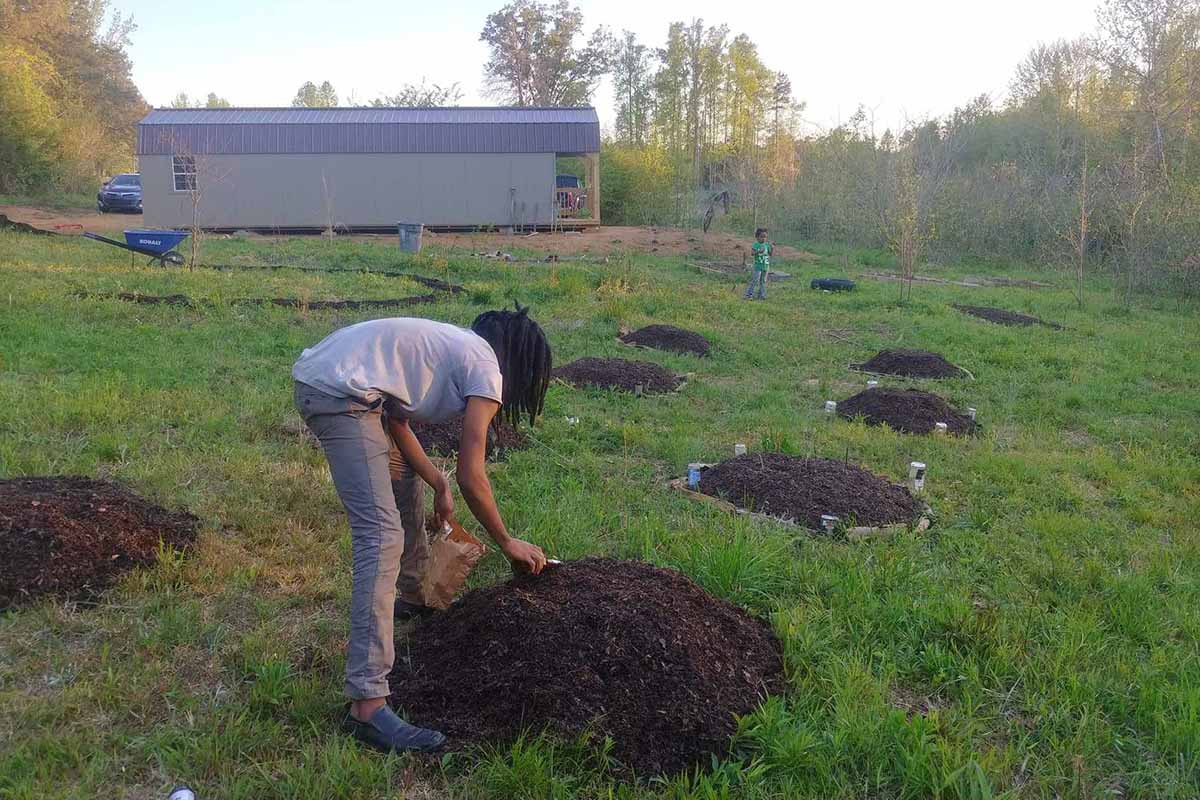
When preparing your soil, shape it into a raised circular mound approximately one foot in height, with a diameter ranging from 18 inches to three feet.
My preference was to use a mixture of 70 percent soil and 30 percent compost when constructing these mounds.
If you would like to create multiple mounds and have the space for them, ensure a distance of three to four feet between each mound in every direction.
How to Grow
Start by soaking approximately four to seven corn seeds overnight before planting them. Soaking will help your seeds absorb moisture, encouraging germination.
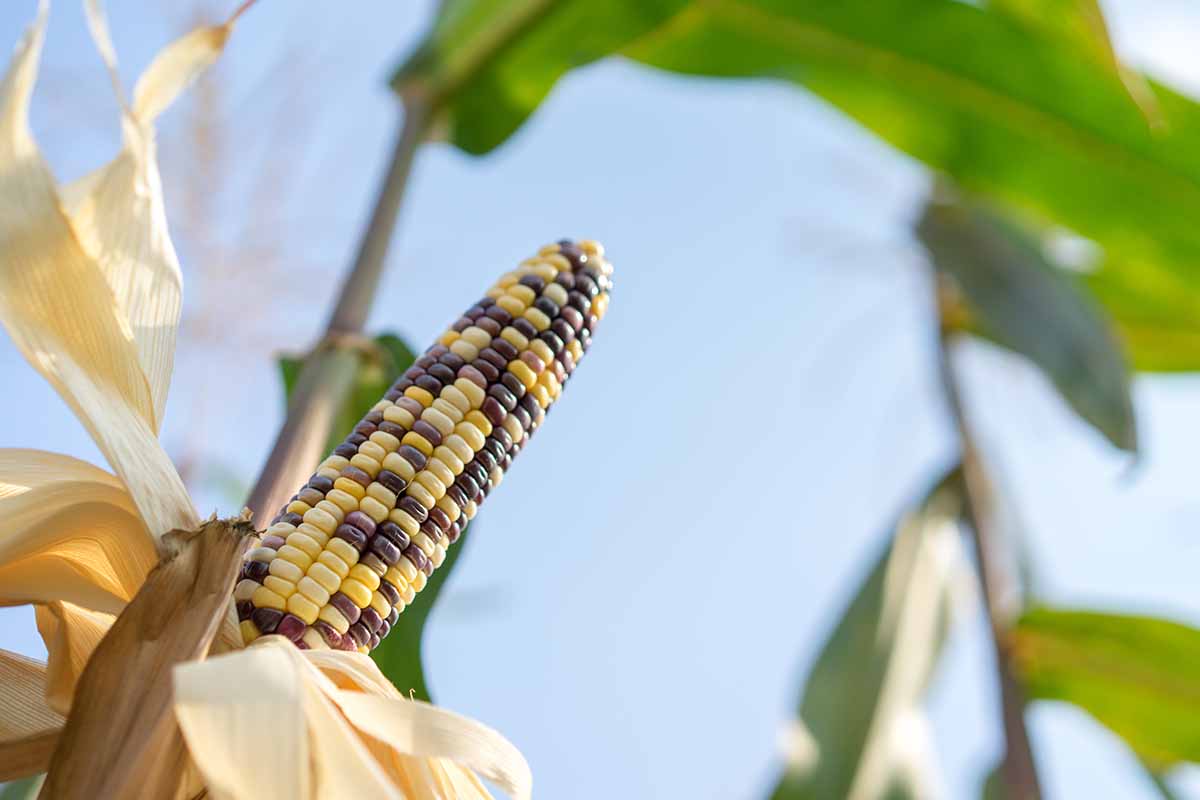
Sow the seeds one inch deep in the middle of the mound, giving them about six inches of space between each one. As they grow, you’ll want to thin them out so that you have three or four healthy seedlings per mound.
In Indigenous traditions, planting often begins with gratitude to the “Four Directions,” aligning corn seeds with the cardinal points: north, south, east, and west.
Now, when it comes to selecting your corn, there are plenty of options out there.
Gardening experts at Cornell University suggest going for dent, flint, or flour corn varieties since they work really well in this setup.
‘Roy’s Calais’ flint corn seed is available from High Mowing Seeds.
This heirloom variety produces kernels in a range of attractive hues, and seed royalties and a portion of sales proceeds go to the Indigenous Seed Keepers Network and the Native American Food Sovereignty Alliance.
Read more about growing corn here.
After about a week or two, once the corn has grown to a height of at least four, and up to six inches, it’s time to add some pole beans.
Soak six pole bean seeds in water overnight, and then plant them in a circle roughly six inches away from the corn, sown one inch deep.
True Leaf Market offers the ‘Blue Lake’ pole variety in multiple package size options.
As the bean seedlings grow, you’ll want to thin them out, keeping the three or four strongest seedlings to ensure a healthy crop.
As the bean plants grow, they will naturally start to climb. If you like, you can encourage them to climb the corn stalks by gently guiding the vines towards the plants and twining the tendrils around the stalks.
Around one to two weeks after planting the beans, sow six to eight squash seeds so they’re evenly spaced along the outer edge of the mound or around 12 to 15 inches outside the beans, putting two seeds in each hole to help make sure that at least one germinates.
Space your seeds around 18 inches apart and sow them at a depth of about one inch.
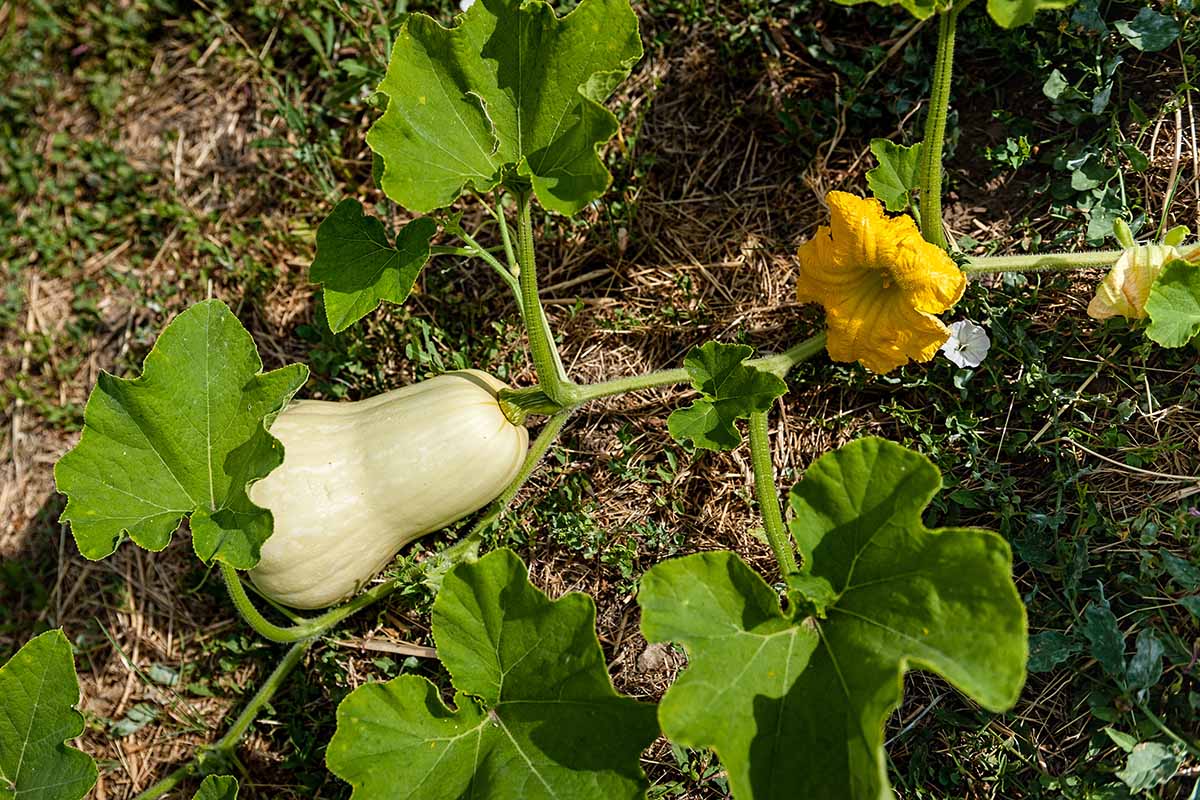
You have an option of using summer or winter squash.
Keep in mind that summer squashes tend to grow more bushy than vine-like, so they may not make the best ground cover. Burpee sells a variety of heirloom and hybrid seed packets.
The squash should sprout in about a week’s time. As the squash plants grow, they will naturally spread across the ground.
You can guide them towards the open spaces between the mounds, ensuring they cover the ground beneath and around the corn and bean plants.
You can assist by using your hands to gently lift and guide the squash vines in the direction you want them to grow.
Be careful not to break or damage the vines while doing this. You can also train the vines to extend toward the open spaces by gently bending or coaxing them in that direction.
You can also use small stakes or twine to gently secure the vines in the desired path. However, like with the pole beans, you can let this process happen naturally as well.
Find more information about growing healthy squash plants here.
Harvest
Let’s talk about harvesting!
Corn is best in autumn when the silk is dry and dark brown.
For beans, pick them fresh when pods are firm, typically in the late morning after the nighttime dew has dried. You can also let beans dry on the vine for later use.
As for squash, summer squash can be harvested when it’s small or larger, depending on your preference and the recommended number of days to maturity.
Winter squash should be picked when the skin hardens in the autumn, but be careful not to damage the stem to prevent rot in storage.
Three Sisters Gardening: A Tradition
Cultivating a three sisters garden is not only a journey into sustainable gardening, but also an immersion into a profound Native American tradition that has sustained communities for centuries.
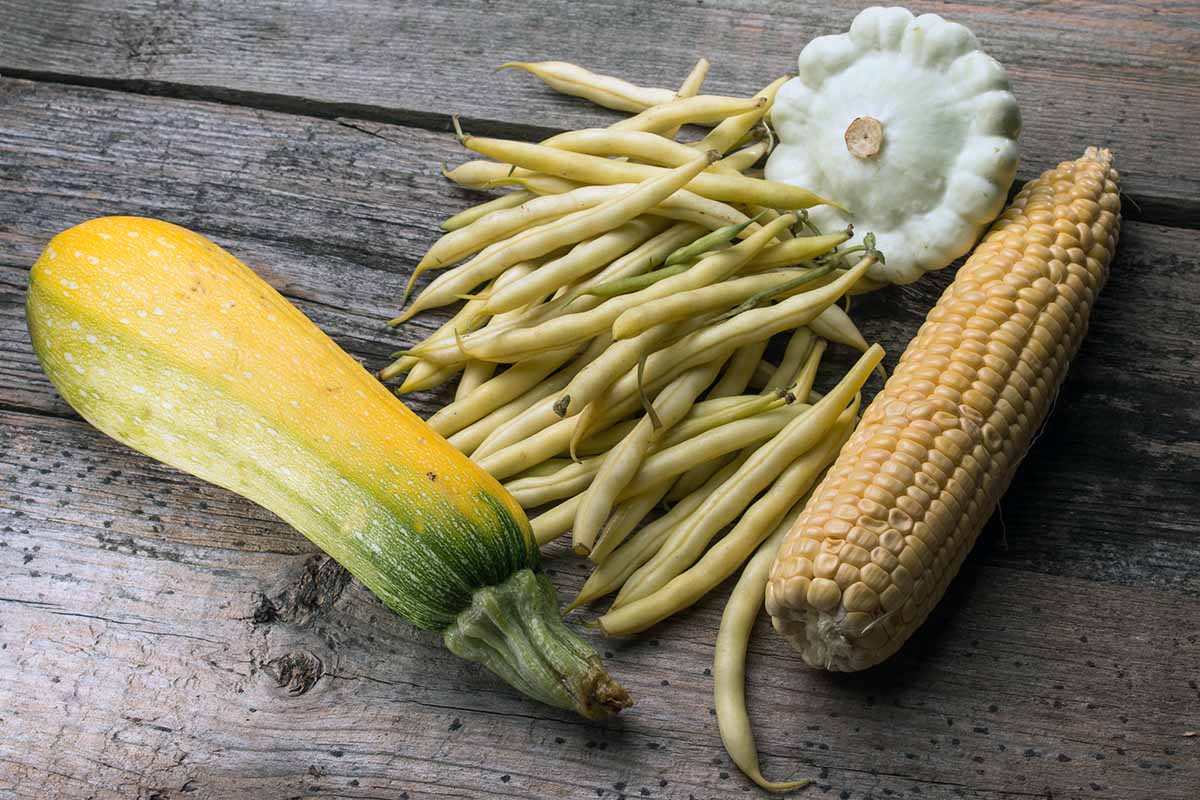
This method embodies the beauty and harmony among well-suited companions, corn, beans, and squash, where each crop plays a unique and essential role.
While the corn stands tall, the beans enrich the soil, and the squash blankets the earth. Together, they weave a story of interdependence, resilience, and abundance in the garden.
So, whether you’re a seasoned gardener or just starting, consider embracing this gardening technique for a bountiful and sustainable harvest that transcends generations and cultures.
Have you tried three sisters gardening in your own backyard? Please share your insights and stories in the comments below. We’d love to hear from you!
To learn even more about growing vegetables, check out these articles next:
